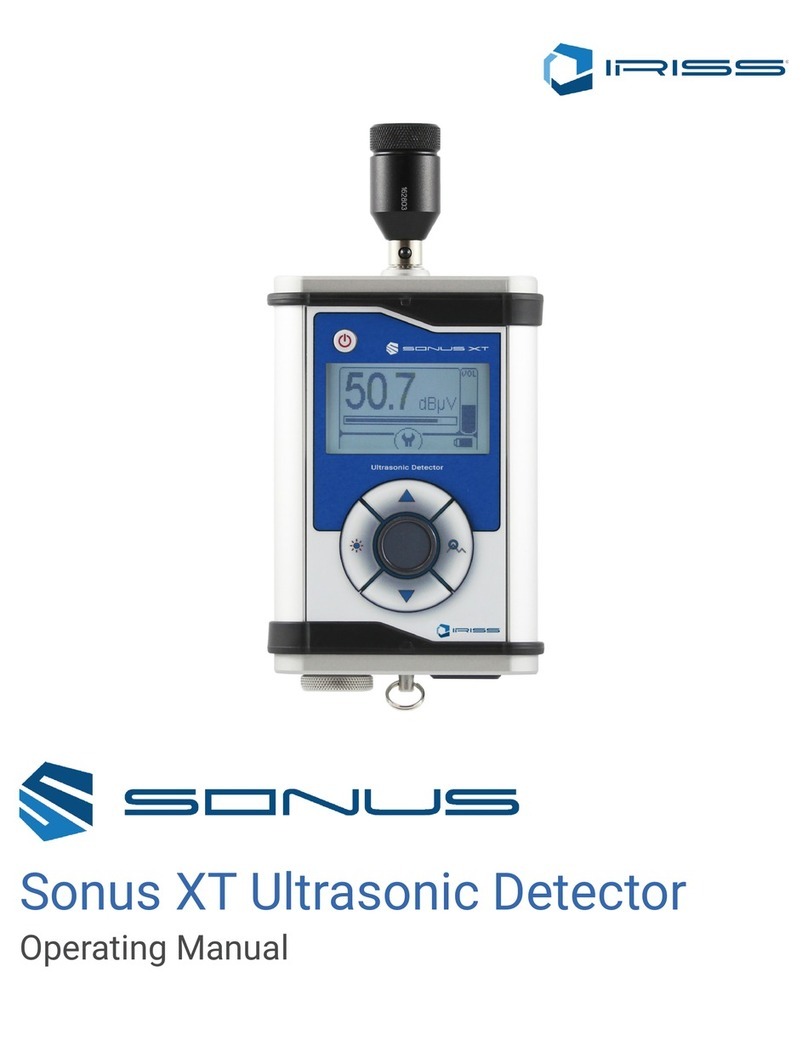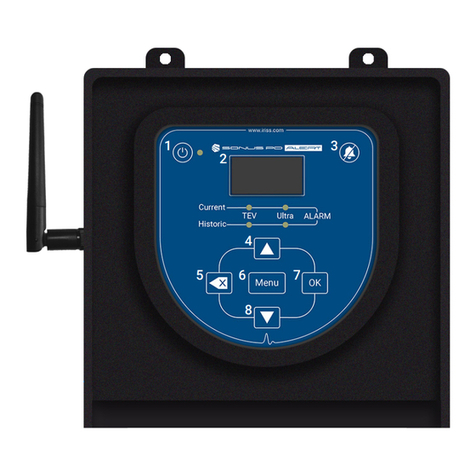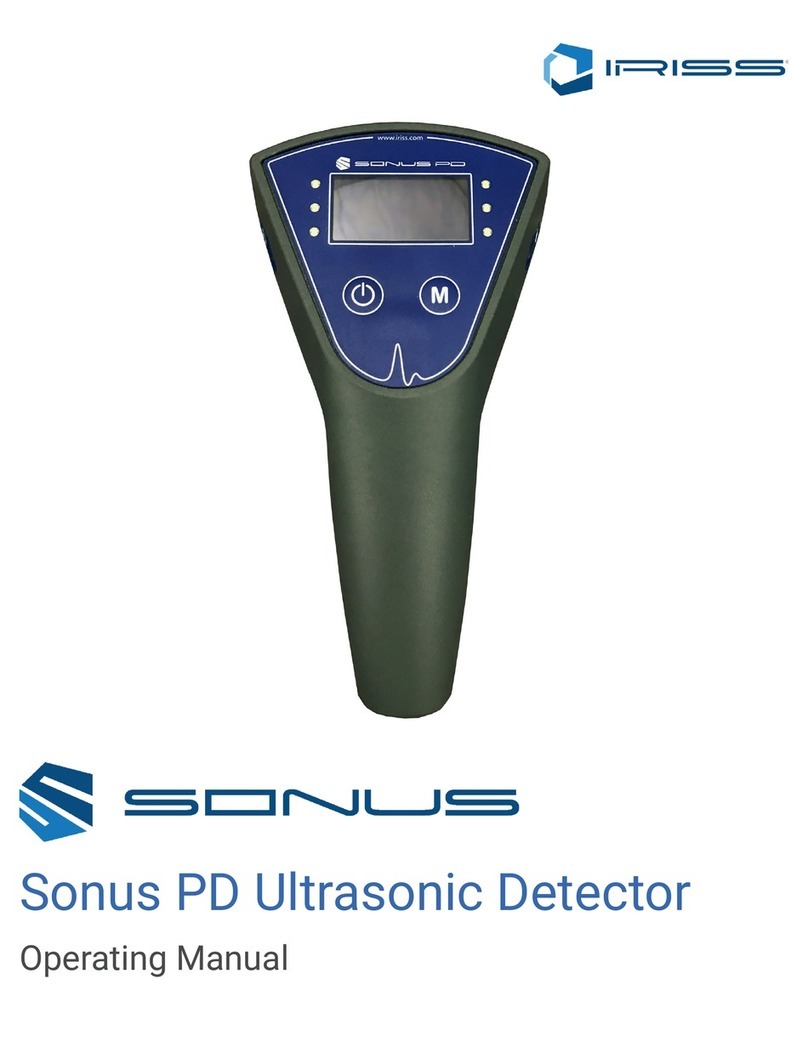
82020 Sonus PD Alert Operating Manual
IP Rating
The Sonus PD Pro is IP54 rated but is not intended for use in damp conditions.
CE Compliance
The Sonus PD Pro complies with the following directives:
EN 61000-6-2: 2005 IMMUNITY STANDARD (INDUSTRIAL ENVIRONMENT)
EN 61000-6-3: 2007 EMISSION STANDARD (RESIDENTIAL, COMMERCIAL and LIGHT INDUSTRY ENVIRONMENT)
The Sonus PD Pro Kit List
The Sonus PD Pro Kit includes:
• 1x Sonus PD Pro
• 1x Sonus PD Pro power supply/
charger unit
• 1x USB Charger Cable
• 1x Car Charging Adapter
• 1x Stereo Headphone with 3.5mm
Jack
• 1x PD-FT Function Tester
• 1x Moulded carry case
• 1x Sonus PD Pro Companion App
Manual
General Substation Safety Precautions
Before setting up the Sonus PD Pro in the substation it is important for the user to read and understand the
following general safety information.
The engineer should obey the plant owner’s High Voltage safety rules at all times. The following safety rules
whichareparticulartotheSonusPDProequipmentshouldbeappliedinadditiontotheexistingsafetyrules,
whicharerequiredbytheplantowner.GeneralsafetyrulesfortheuseoftheSonusPDProareasfollows:
1. Avoid working alone.
2. OnlyaccreditedpersonnelwithappropriateHealthandSafetyTrainingshouldusetheequipment.
3. Donotusetheequipmentifitisdamaged,oritssafetyisimpairedinanyway.
4. TheUsershouldhavereadandunderstoodtheappropriateequipmentmanuals.
5. Always select the appropriate sensor and sensor connection for the application.
6. Theinstrumenthasbeendesignedforuseonlyontheearthed,outersurfacesofmetal-cladequipmentandearthedconnections
of cables/switchgear. The Sonus PD Pro or PD sensors should never be connected to, or put near, any high voltage components.
7. Never disconnect or loosen an earth connection in order to install a PD sensor
8. Cables connecting PD sensors to the instrument do not provide protection against high voltage.
9. Always maintain Safety Distances between the instrument, PD sensors, the operator, and any high voltage components.
10. Donotdisturborinterferewiththehighvoltageequipmentinanyway.
11. The User should wear sensible and appropriate PPE and clothing when in the substation.
Optional sensors supplied separately
• 1x HFCT sensor for Cable PD
• 1x UHF sensor for GIS PD
• 1x Ultrasonic Parabolic Dish
• 1x AA Ultrasonic Probe
Figure 1: PD Detector kit






























